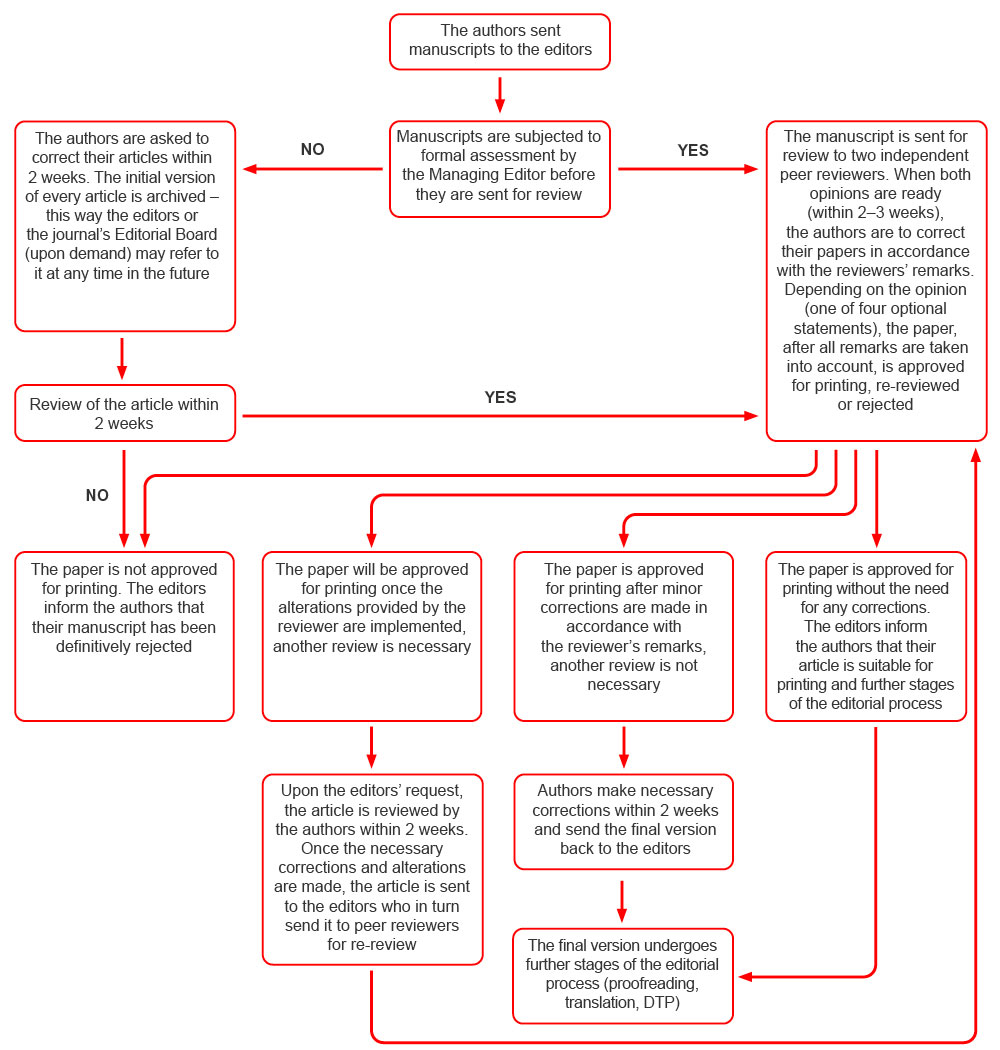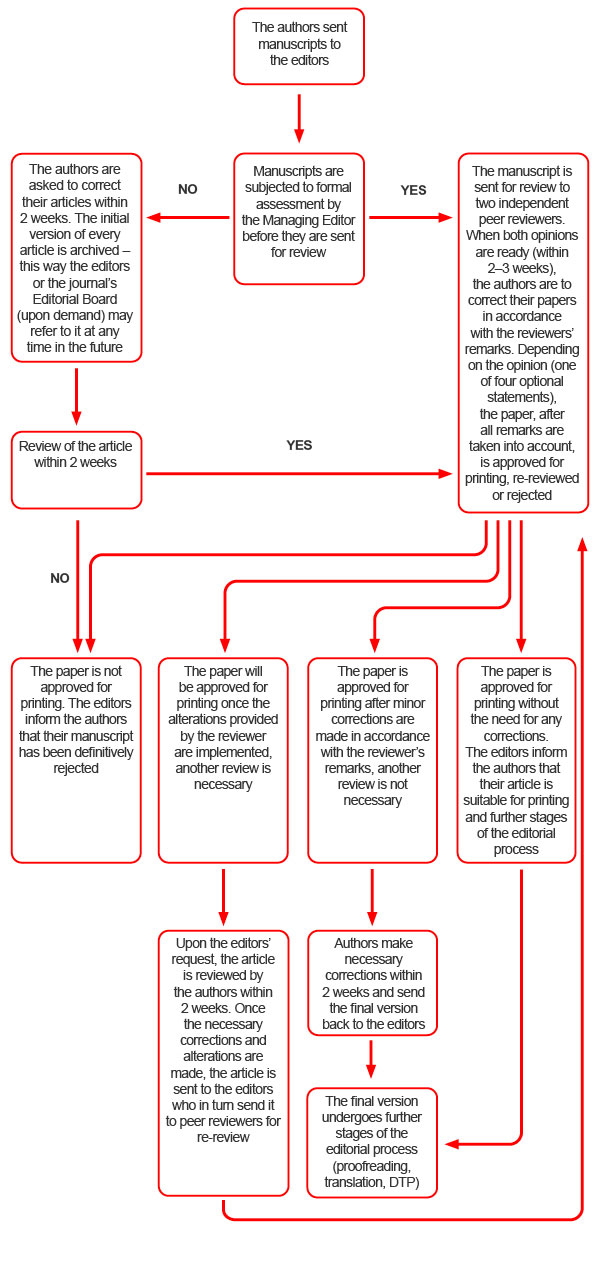Editorial and Peer Review Process
The editorial and peer review process of articles to be published in journals of Medical Communications follows the code of good practices by the Ministry of Science and Higher Education stipulated in the paper entitled Dobre praktyki w procedurach recenzyjnych w nauce as well as the recommendations of ICMJE and WAME.
Manuscripts submitted for publication are subjected to formal assessment by the Managing Editor. Incomplete manuscripts or manuscripts that fail to meet formal criteria are sent back to authors for correction.
Once a manuscript is deemed formally correct, it is subjected to further assessment. Each manuscript is registered under a particular number and sent to two independent reviewers – these are specialists in the field within which the article’s subject falls, not linked to the unit the authors are affiliated with, having no conflict of interest with the authors (arising from professional hierarchy, family relationship or a direct scientific cooperation within two years that precede the date of reviewing).
The double-blind review mode is applied, which means the identity of the reviewers is not revealed to the authors and vice versa – the reviewers do not know the identity of the authors and other reviewers. However, for the editorial and peer review procedure to be clear and transparent, the editors of each journal list the names of all reviewers that have reviewed manuscripts in a given calendar year. The list is provided in the first or the last issue for the given calendar year as well as on a journal’s respective website. The initial stage of the peer review process (the assessment of the submitted manuscript) is concluded within 2–3 weeks. Following this period, the reviewers provide the reasons of substance for their assessment and express a clear opinion on the manuscript in accordance with the following optional statements:
- the paper is approved for printing without the need for any corrections
- the paper is approved for printing after minor corrections are made in accordance with the reviewer’s remarks, another review is not necessary
- the paper will be approved for printing once the alterations provided by the reviewer are implemented, another review is necessary
- the paper is not approved for printing
If an article is positively received by the peer reviewers, it goes into print. Should any discrepancies in the assessment of a given manuscript occur, the Editor-in-Chief commissions a third reviewer into expressing their opinion. The full editorial process should not exceed three months.
To learn more about the reviewers’ duties, read the section Publication Ethics.

